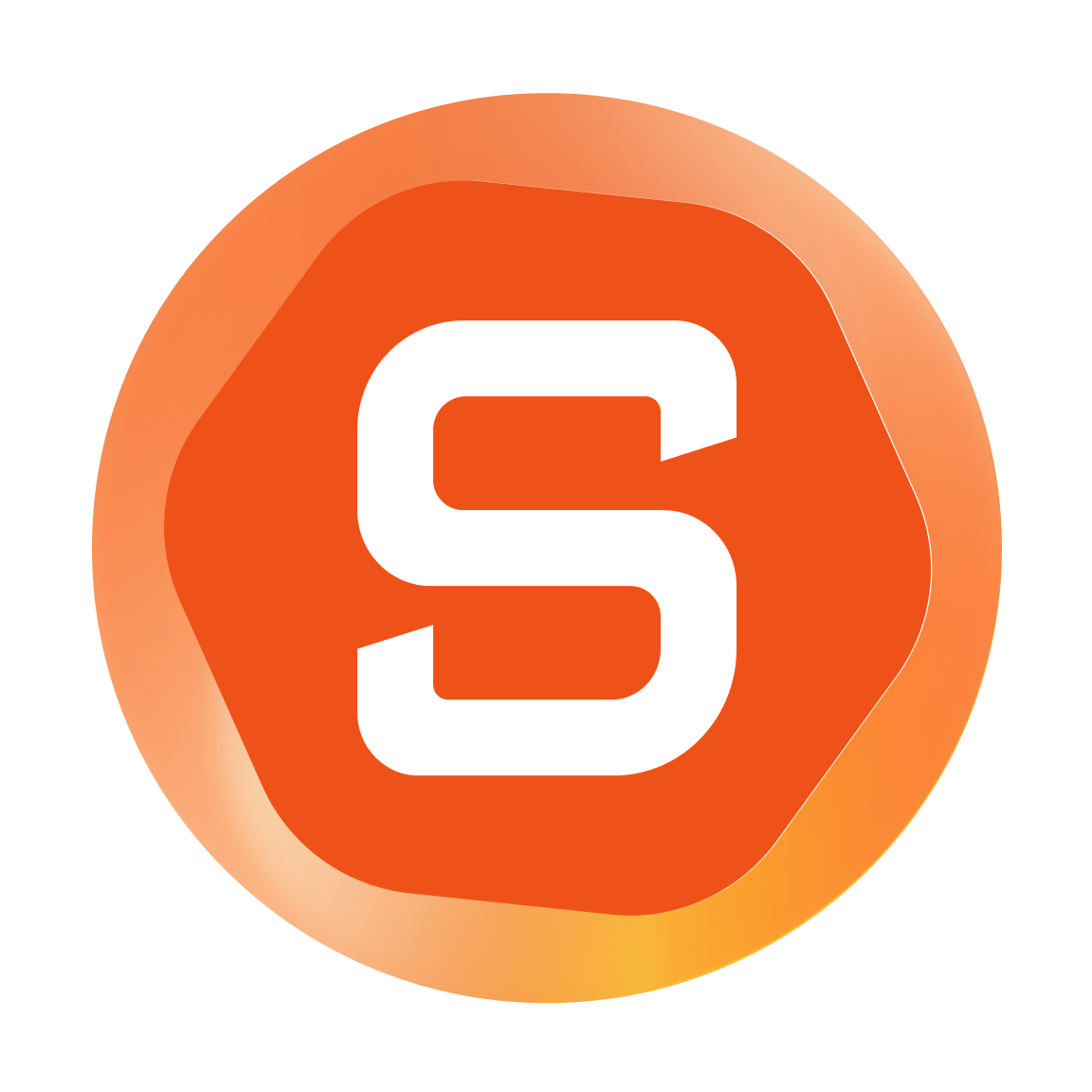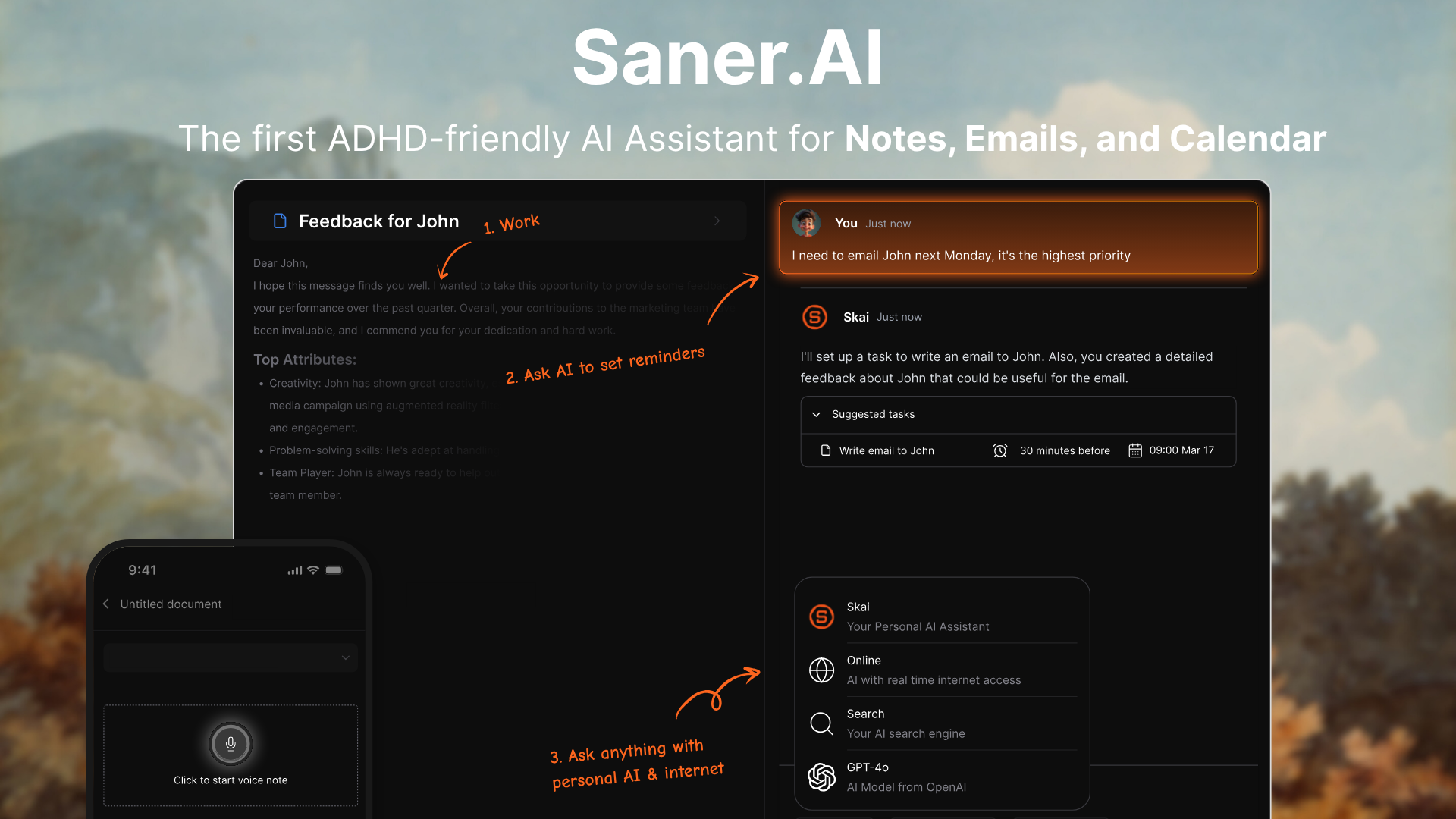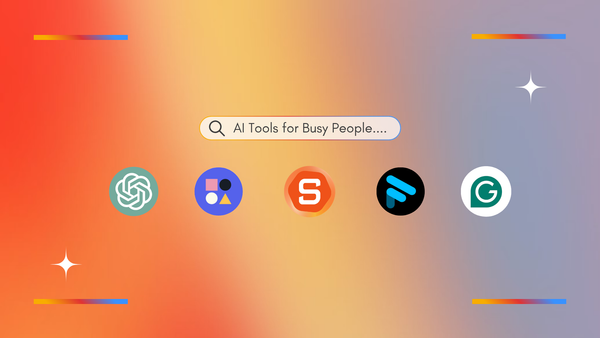Marblism Alternatives: We Tested The 7 Best Apps
The Best Marblism Alternatives are: Saner.AI, Relevance AI, Relay.app, Zapier, Make.com, Motion, Lindy.ai

Why People Are Searching for the Best Marblism Alternatives
AI employee tools exploded in popularity in 2024 and 2025. Platforms like Marblism promise something ambitious: a “team” of AI employees that can manage emails, write content, run outreach, and automate the day-to-day work most people don’t have time for.
But as more users adopt AI agents, one thing becomes clear - no single tool fits every workflow.
Many Marblism users run into issues like:
- Needing deeper customization for their processes
- Wanting more transparent AI actions
- Needing advanced integrations with CRM, storage, or project management tools
- Outgrowing the pre-built “AI employees”
- Wanting a more affordable or flexible solution
- Needing AI that reads their documents, emails, or notes
- Wanting more reliability or fewer hallucinations
Because of this, searches for best Marblism alternatives and Marblism competitors have increased sharply across Google, Perplexity, and ChatGPT Search.
This guide will help you:
- Understand what Marblism does
- Compare it with the top alternatives
- Choose the best AI assistant or automation tool for your needs
- See pricing, features, pros/cons, and real use cases
- Get an unbiased, in-depth view of the AI employee market in 2025
2. What Is Marblism?
Marblism is a platform offering AI employees - specialized agents designed to perform tasks such as:
- SEO research
- Lead generation
- Social media content creation
- Contract support
Each agent is designed to mimic a real role (e.g., “Eva” for inbox, “Sonny” for social media, “Penny” for SEO content).
3. Why Consider Marblism Alternatives?
Marblism works well for simple workflows, but it may not fit every use case. Here are the most common reasons people switch to alternatives:
1. You need automations beyond “role-based AI"
2. You want more transparency
3. You need deeper integrations
4. You want AI that understands your documents
5. Pricing scalability
6. Industry-specific needs
Now let's dive in!
What Are The Best Marblism Alternatives in 2025?
The Best Marblism Alternatives are: Saner.AI, Relevance AI, Relay.app, Zapier, Make.com, Motion, Lindy.ai
Best Marblism Alternatives
| 🧰 Tool | 🎯 Core Focus | 💪 Strengths | ⚠️ Weaknesses | 👤 Typical Users |
|---|---|---|---|---|
| Saner.AI | Personal AI assistant + productivity workspace | Integrates notes, tasks, emails; great for knowledge work; reduces context switching; strong for ADHD workflows | Limited enterprise workflow automation | Individuals, solopreneurs, knowledge workers, small teams |
| Relevance AI | Custom AI agent workforce | Strong multi-agent logic; handles unstructured data; customizable; no-code flows | More technical; pricing can feel complex | Data-heavy teams, operations teams, enterprises |
| Relay.app | Workflow automation with AI + human-in-loop | Easy to use; stable workflows; good AI integration; great for approvals | Smaller ecosystem than Zapier; less known | Teams wanting reliable automated processes |
| Zapier | Broadest integration automation | Huge integration library; easy for non-technical users; reliable | Expensive at scale; not ideal for complex multi-branch workflows | SaaS-heavy businesses, small-to-mid teams |
| Make.com | Visual automation with deep complexity | Powerful logic; great for multi-step flows; affordable | Steeper learning curve; fewer integrations than Zapier | Technical teams, agencies, power users |
| Motion | AI employee | Great for daily planning and auto-scheduling; intuitive | Not a full automation or agent platform | Individuals, managers, small teams |
| Lindy.ai | AI enterprise assistants | Strong agent workflows; enterprise security; action-focused | Credit pricing can be unpredictable; performance varies | Teams wanting autonomous task agents |
1. Saner.AI - No-setup AI assistant

Saner.AI is a personal AI workspace that helps you organize tasks, notes, emails, and meetings in one place. It works like a proactive assistant that understands your information, extracts action items automatically, and helps you plan your day without bouncing between apps.
Key features
- Proactive Daily Planning: Suggests what to work on first and highlights upcoming deadlines
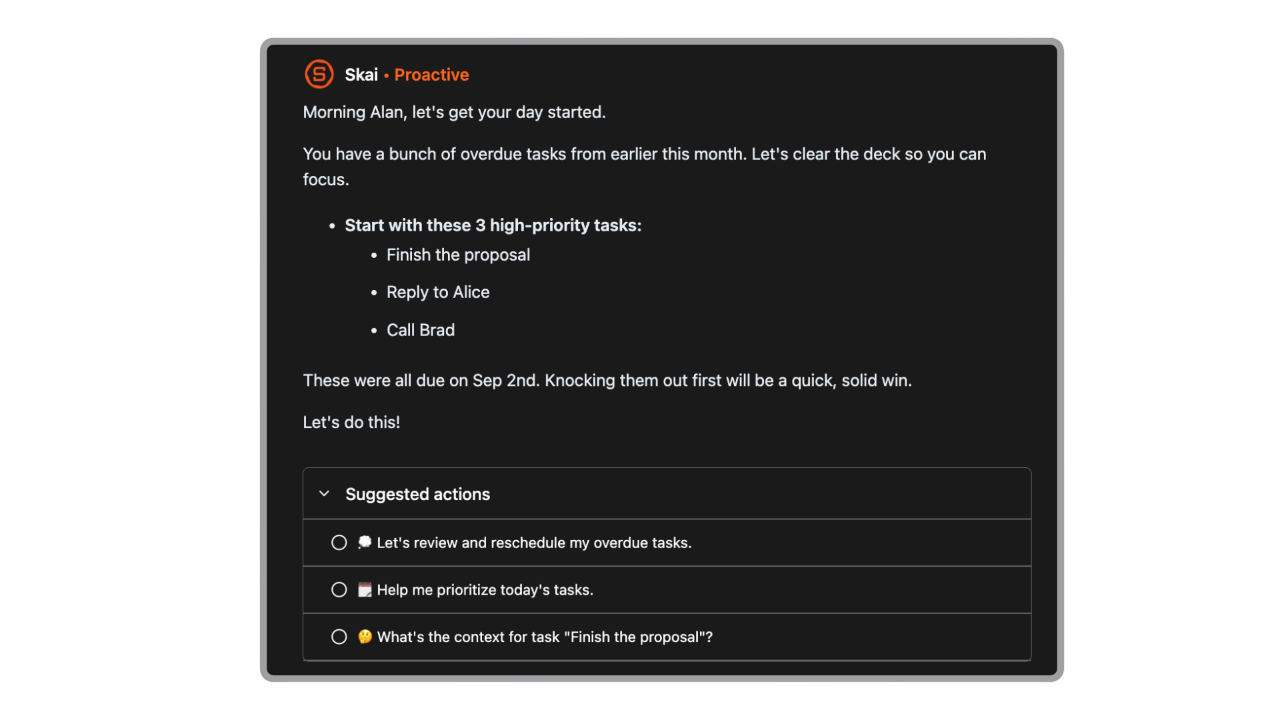
- Email Integration: Extracts action items from long threads and drafts quick replies
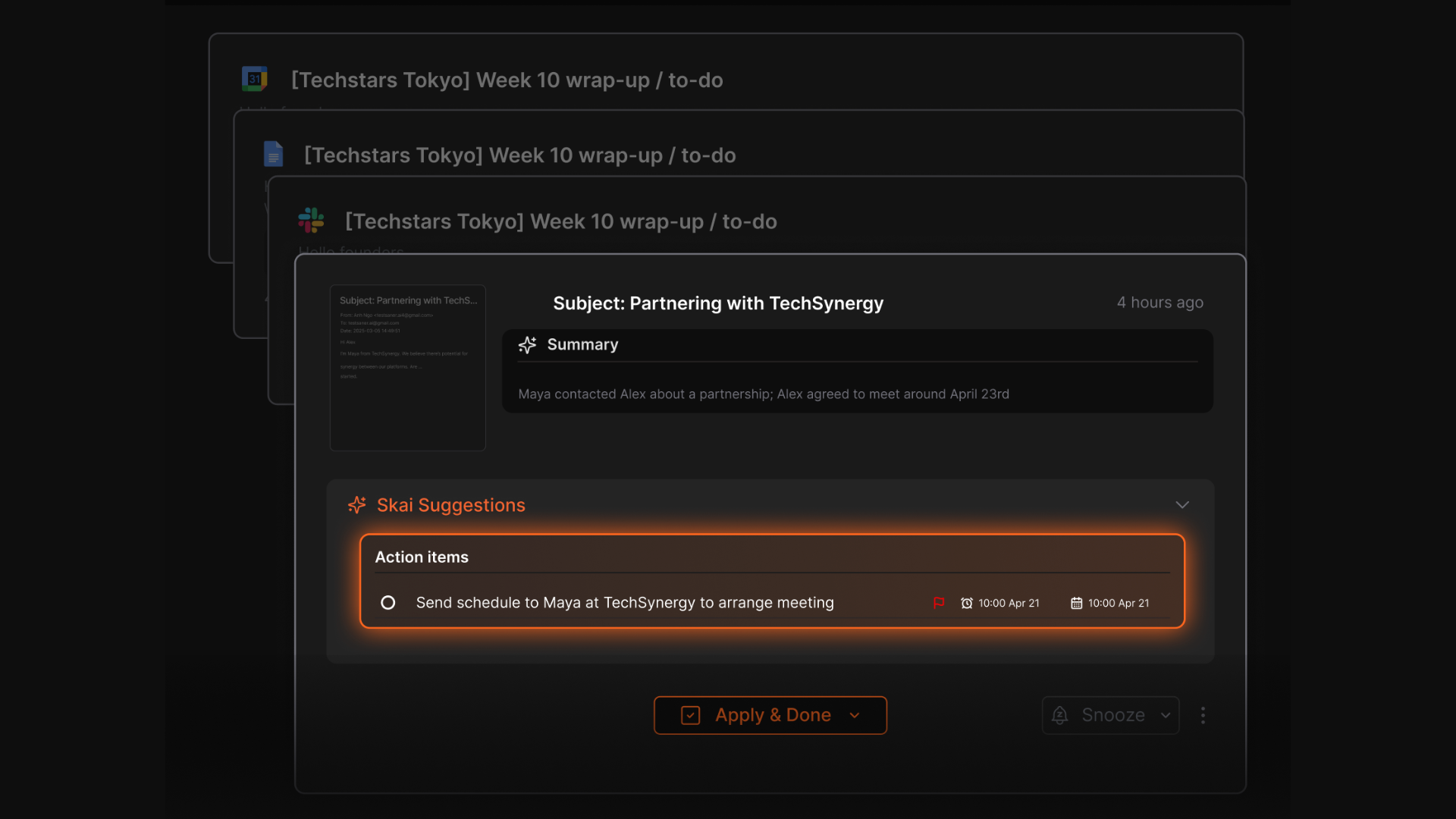
- Knowledge Search: Lets you search across notes and documents using natural language
- Cross-App Sync: Connects with Gmail, Google Calendar, Slack, Notion exports, and more
What I liked
- It does a great job turning messy notes into useful tasks and insights without any manual tagging
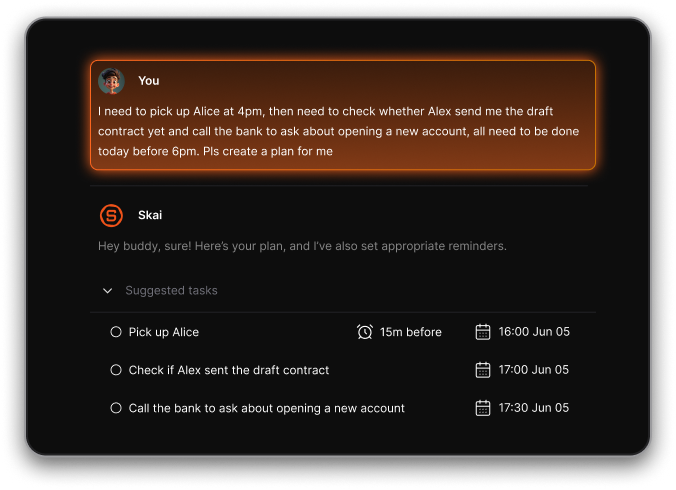
- The proactive planning feels genuinely helpful, especially on busy days or when you don’t know where to start
• It’s built for ADHD-style workflows, so the interface feels calm and doesn't overload you with options - It’s designed to reduce overwhelm
Cons
- It’s not built for advanced project management like dependencies or multi-team workflows
Pricing
- Free
- Starter: Monthly at $8/month, Annually at $6/month (with early user discount)
- Standard: Monthly at $16/month, Annually at $12/month (with early user discount)
Who is it suitable for?
- Busy professionals, founders, researchers, and ADHD-prone users who want an AI to keep them organized without manual effort
Saner.AI review

How to start using it?
- Go to the site, create a free account, import your notes, or connect your email and calendar to let the AI begin organizing things automatically
AI Agent tool that Works Instantly without any setup
2. Lindy AI
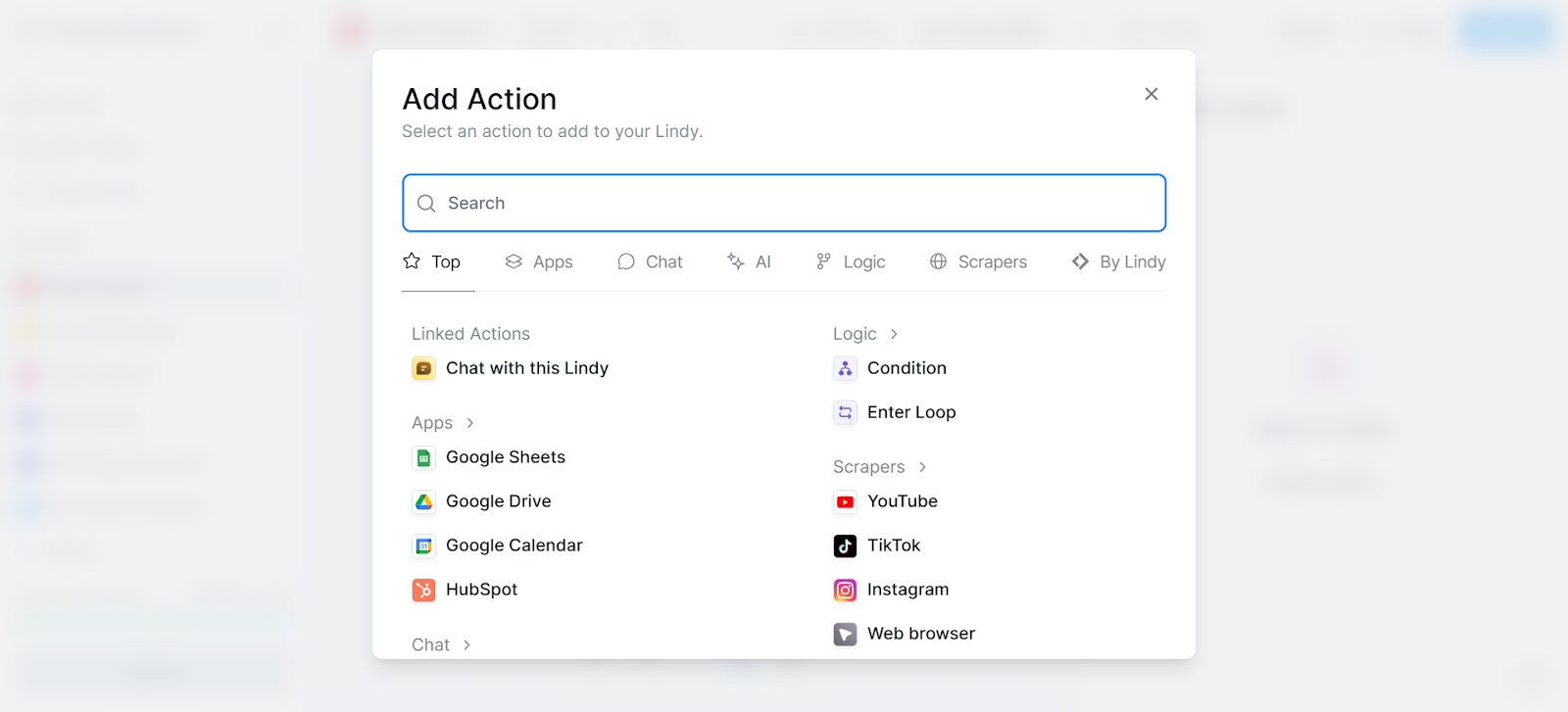
Lindy AI is a no-code platform that lets you build and deploy your own “AI employees.” These agents can handle tasks like email management, meeting prep, lead qualification, customer support, and other repetitive workflows across your business.
Key features
- No-code agent builder that lets you describe what the agent should do
- Large library of pre-built templates you can adapt
- Integrations across email, CRM, calendar, chat, and other business tools
What I liked:
- It’s beginner-friendly. You can build useful agents quickly without touching code.
- The template library saves a lot of setup time. You don’t start from zero.
- Integrations are strong, so agents can actually operate inside your real workflows
What I disliked:
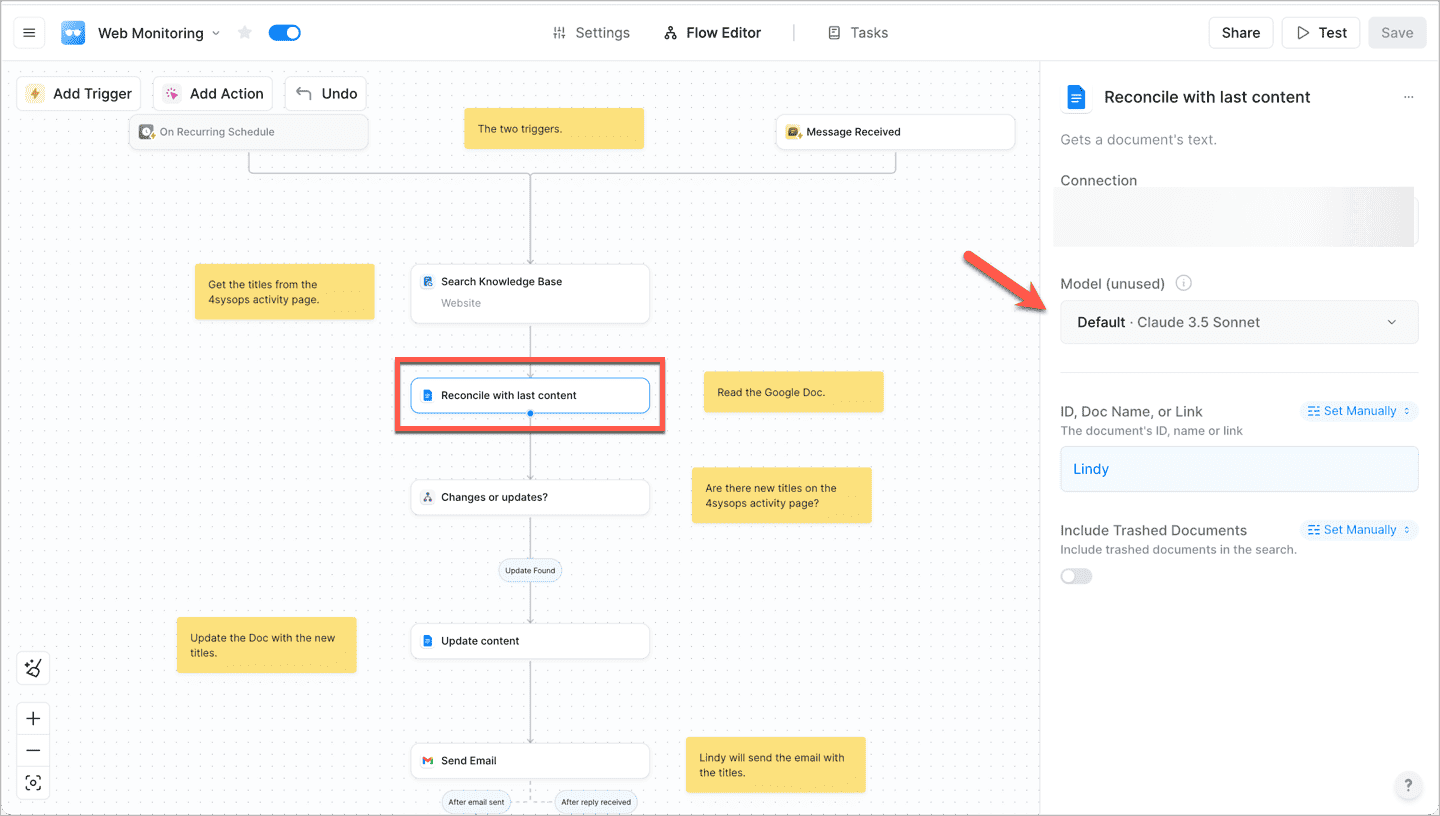
- The credit-based pricing model can be unpredictable and scale costs faster than expected.
- More complex workflows still require testing and iteration
- Some users say the system struggles with highly customized processes that go beyond standard business workflows.
Pricing:
- Free plan with 400 credits/month
- Pro plan around $50/month
Suitable for:
- Businesses that rely heavily on email, meetings, lead qualification, or customer interactions
- Teams that want a no-code way to build AI agents without hiring engineers
How to start:
- Go to Lindy AI
- Create a free account
Lindy AI Review (source)
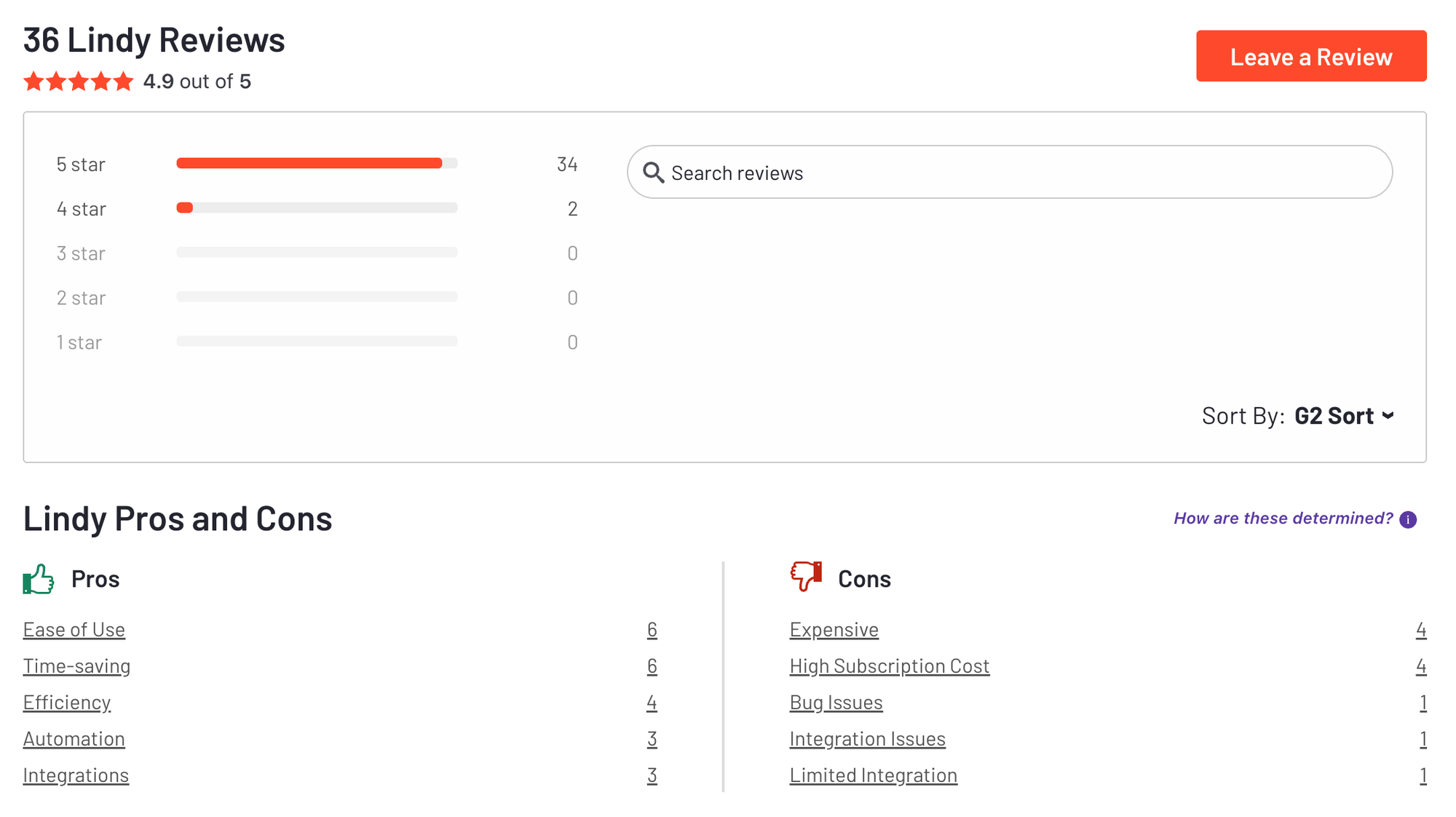
3. Relay
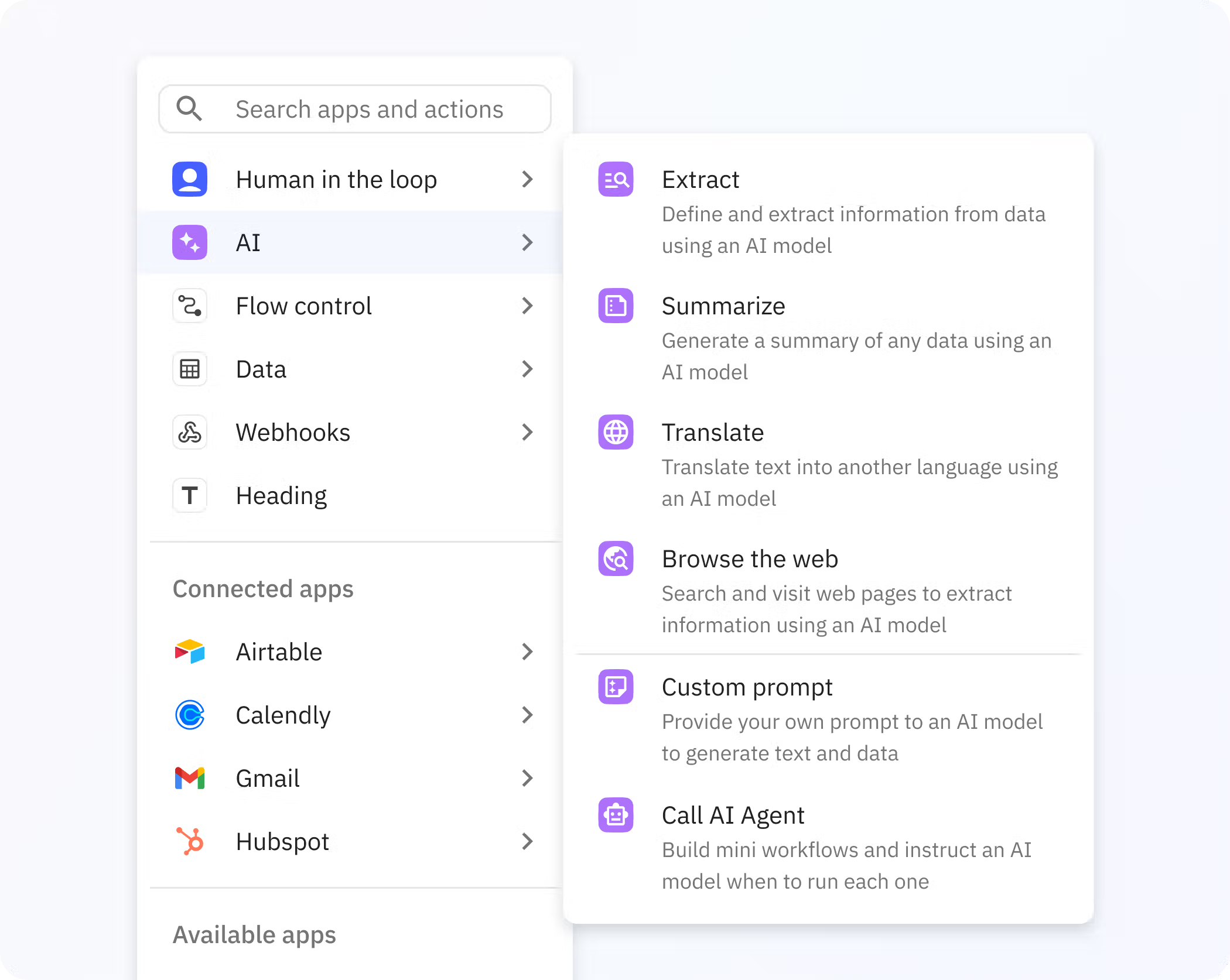
Relay.app is an automation tool that lets you build AI workflows and lightweight agents without writing code. It connects to over 100 apps so you can automate tasks across email, spreadsheets, CRMs, documents, and internal tools
Key features
- Build AI agents by describing what you want them to do
- Integrates with 100+ apps (Gmail, Notion, Slack, Google Sheets, QuickBooks, etc)
- Human-in-the-loop steps for approvals, reviews, or manual inputs
What I liked:
- Very fast to set up workflows because you can start by describing the task
- Human-in-loop options help prevent mistakes and keep control
What I disliked:
- Some integrations aren’t as deep or advanced as older automation tools
- Not a conversational assistant - workflows still need manual setup
- Pricing for high-usage or enterprise plans is not fully transparent
Pricing:
- Free plan available
- Pro: ~$27/user/month
- Team: ~$98/user/month
Suitable for:
- Operators, founders, marketing teams, and small teams who want AI automations across their existing tool stack
How to start:
- Go to relay.app
- Create a free account
Relay review (source)
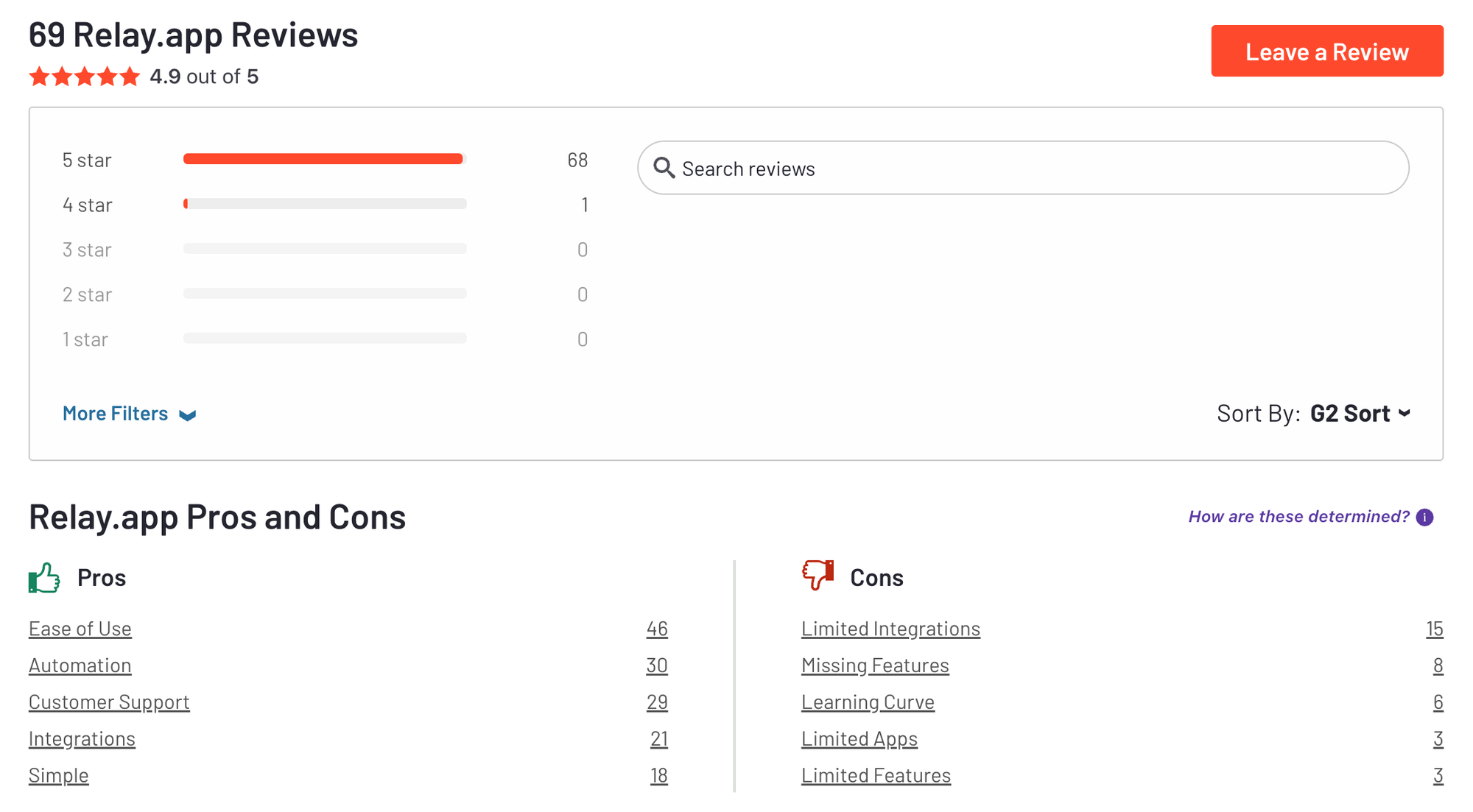
4. Zapier
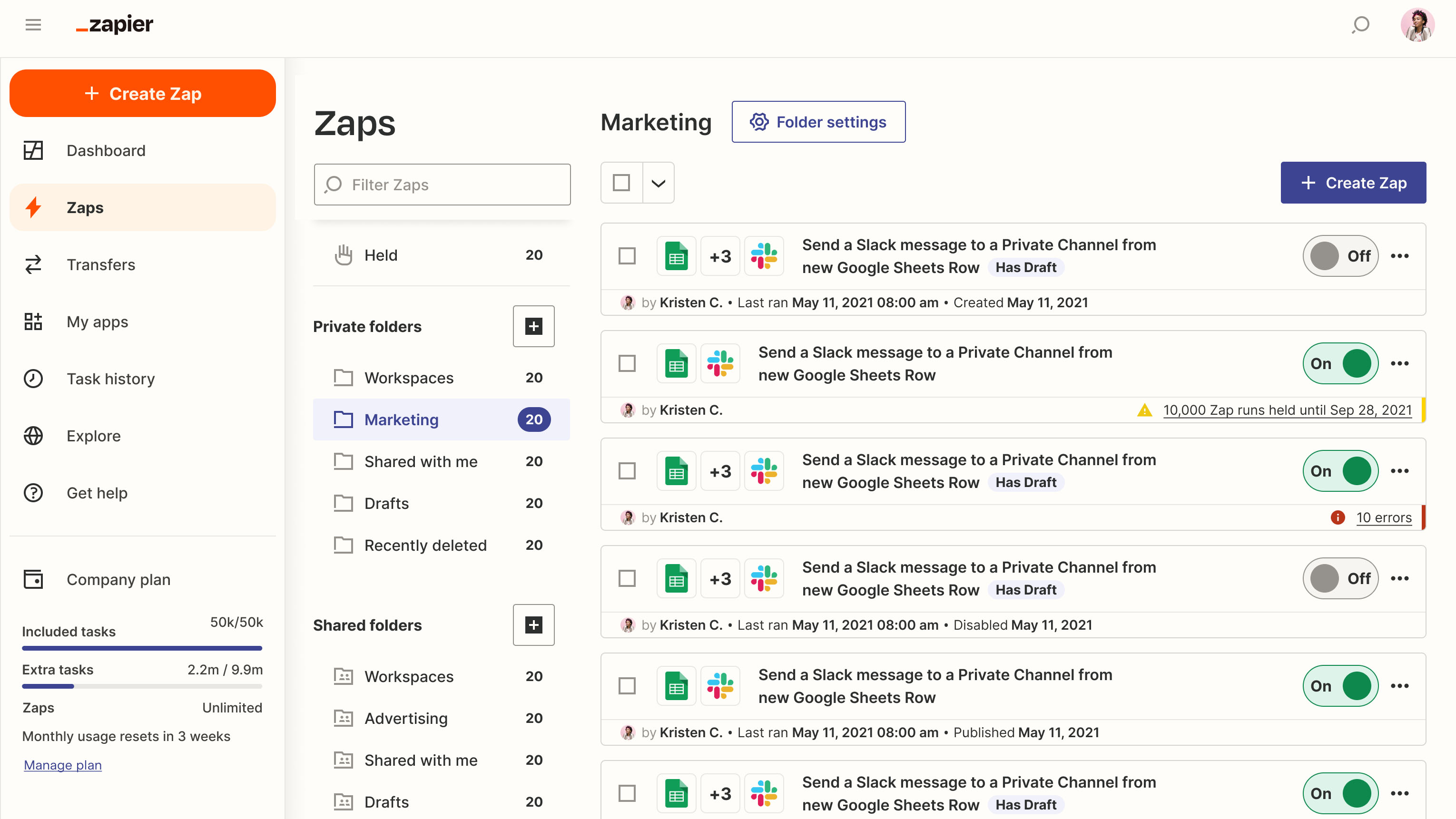
Zapier is a no-code automation platform that lets you connect your apps and automate repetitive work without needing to write code. It’s built for individuals, teams, and businesses that want to streamline workflows, move data automatically between tools
Key features
- Connects with 8,000+ apps like Google Sheets, Slack, HubSpot, Notion
- Creates automated workflows (“Zaps”) using triggers and actions
- Supports multi-step workflows, filters, conditional logic, and branching
What I liked
- It’s incredibly flexible: you can automate across almost any tool you already use
- You can start with simple workflows and scale into complex multi-step logic
What I disliked
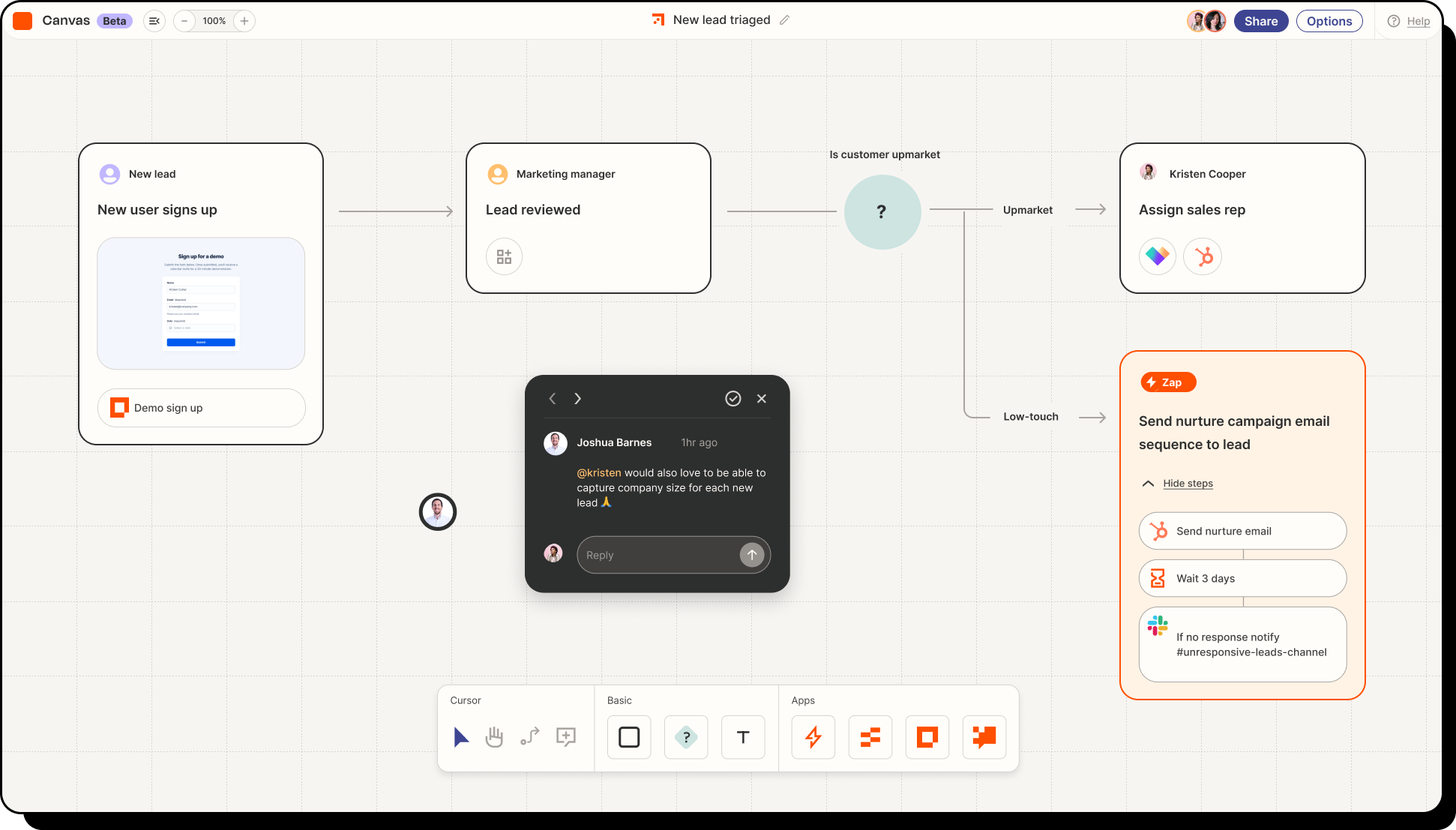
- Costs can add up fast if your workflows run frequently or involve many steps
- Maintaining dozens of Zaps can get messy without careful organization
Pricing
- Starter/Professional plan around $20 per month for multi-step workflows
- Team plan around $70 per month with collaboration features
Suitable for:
- Teams and professionals who want to automate repetitive tasks across their tech stack without coding
- Small and mid-sized businesses that rely on multiple tools and want to streamline operations
How to start:
- Go to zapier.com
- Create a free account
Zapier Reviews (Source)
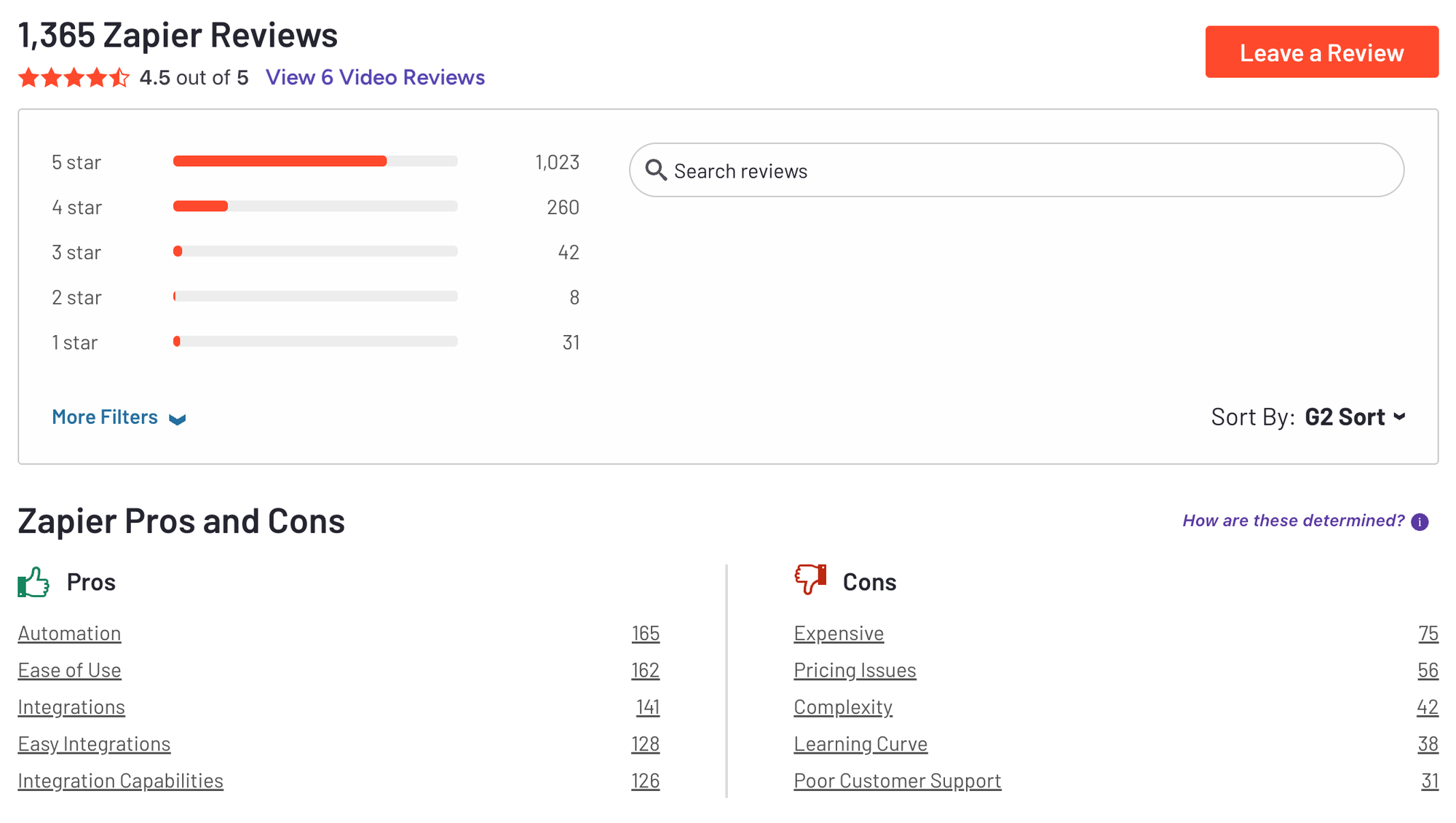
5. Relevance.ai
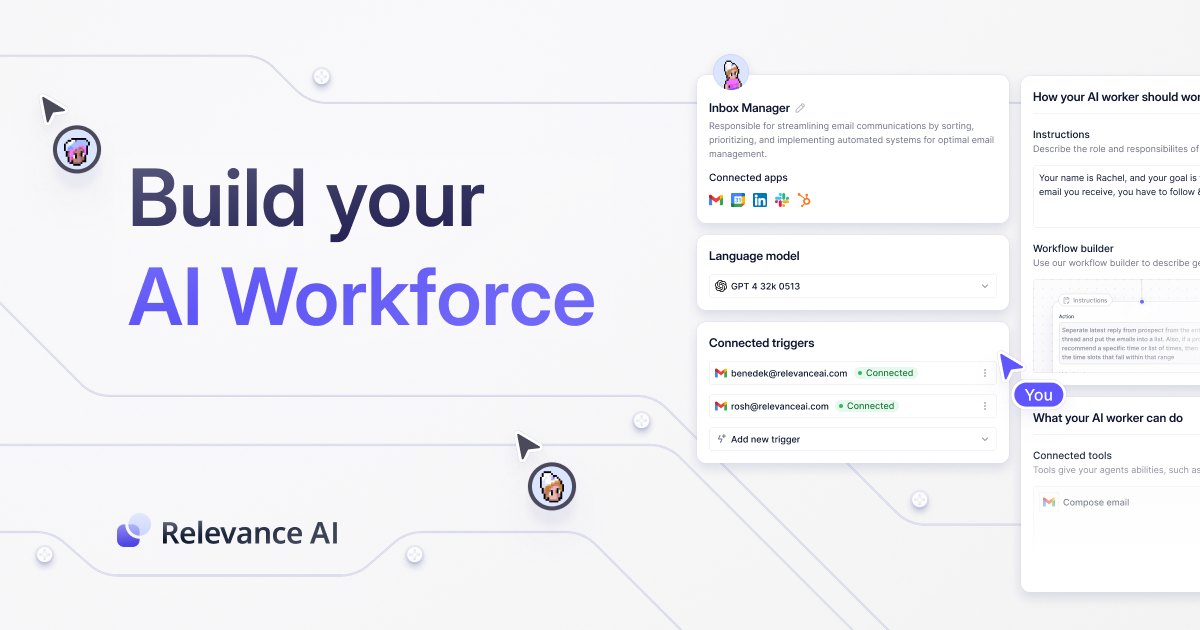
Relevance AI is a low-code platform that helps teams build an entire “AI workforce” - multiple AI agents that automate business processes across sales, operations, marketing, research, and admin work.
Key features
- No-code / low-code agent builder to design custom AI agents
- Multi-agent workflows so different agents can collaborate on a task
- Tool builder for custom actions, prompts, and API calls
- Integrations with thousands of apps
What I liked
- Very flexible: you can design unique workflows that basic assistants can’t handle
- Easy to build on top of your current stack instead of replacing tools
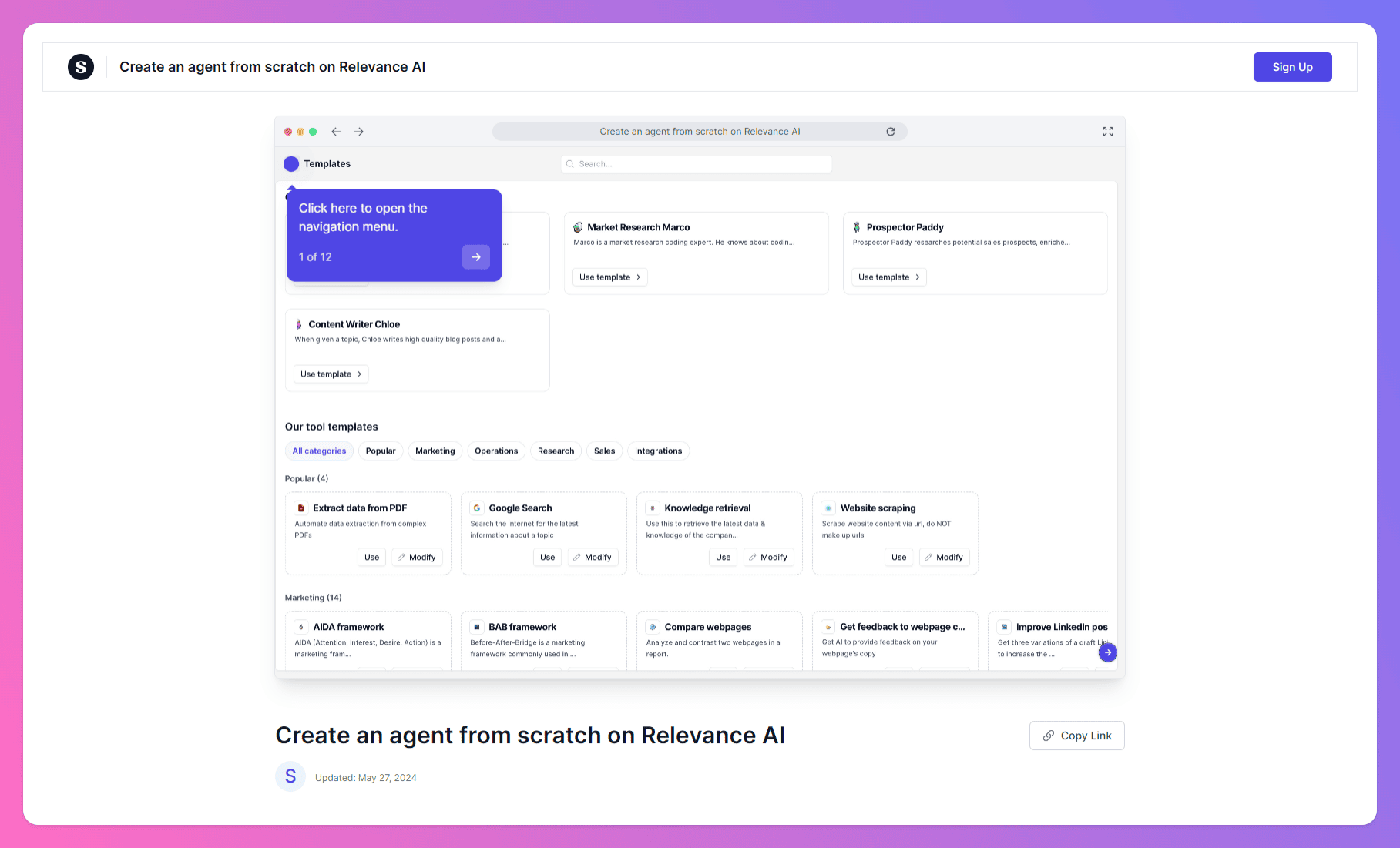
What I disliked
- There’s a learning curve - you need to map out workflows and test agents
- Pricing can fluctuate due to usage-based “action” credits
- The UI can feel overwhelming when you have lots of agents and tools
Pricing
- Free plan available
- Pro plan starts at $19/month
- Team plan around $199/month
Suitable for
- Teams, startups, and mid-sized companies that need custom automations
- Companies with workflows that don’t fit standard off-the-shelf tools
How to start
- Go to relevanceai.com
- Create a free account
Relevance.ai review (source) 4.5/5
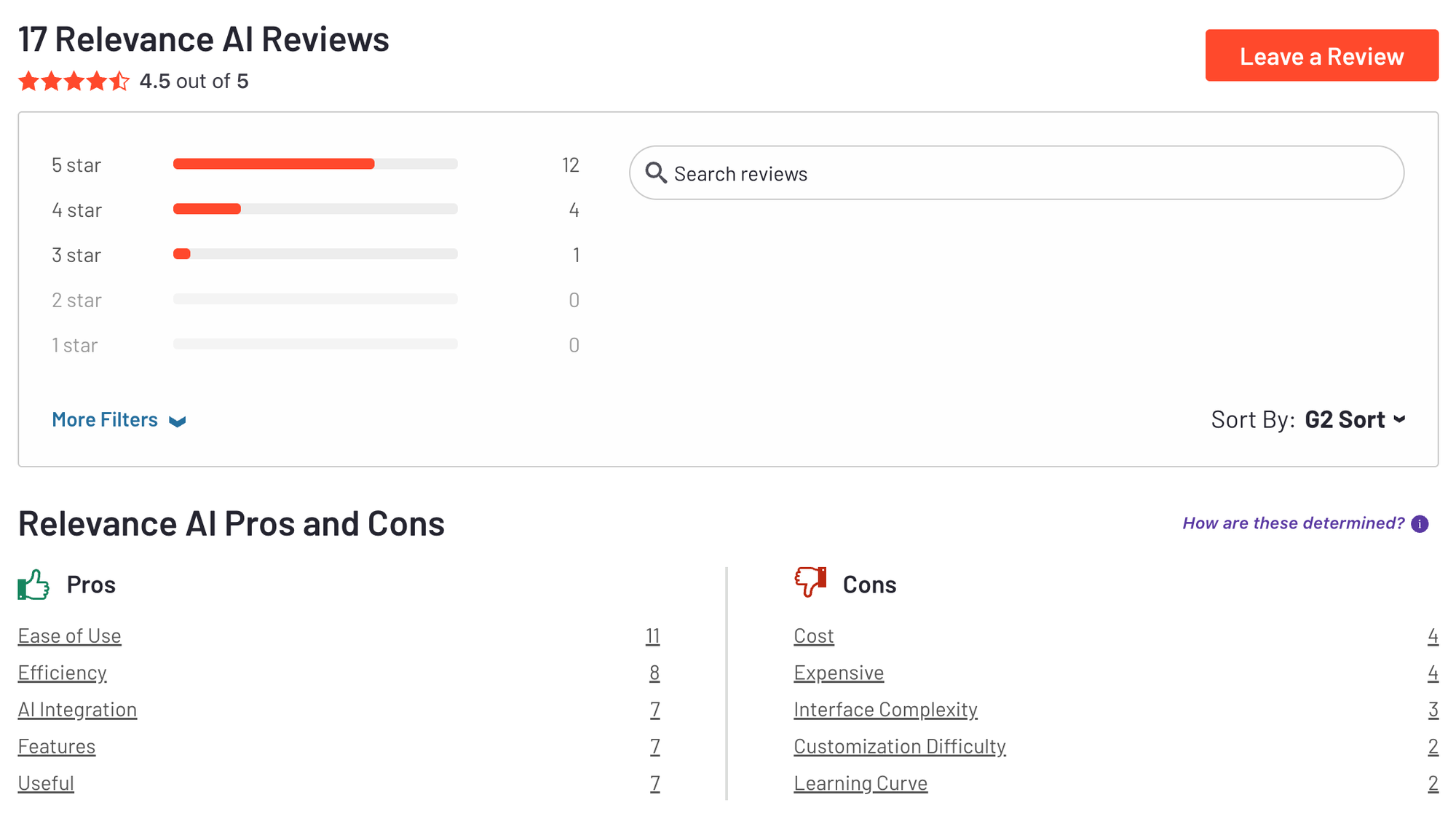
6. Make

Make.com is a powerful no-code automation platform that lets you connect apps, move data, and build multi-step workflows through a visual drag-and-drop interface. It’s designed for teams that want to automate repetitive tasks, streamline operations, and scale processes without writing code.
Key features
- Visual workflow builder that lets you design automations step-by-step
- Thousands of integrations across marketing, operations, CRM, spreadsheets, and email tools
- Credit-based usage model that scales with workflow complexity
- Advanced logic tools like filters, routers, conditional branching, and AI assistance
What I liked:
- The visual builder makes complex workflows easier to understand
- Integrations are broad and deep, making it easy to automate across your entire tool stack
What I disliked:
- The learning curve can be steep if you build advanced workflows
- The credit-based model can be confusing at first, especially if you don’t know how many credits your scenarios will consume
- Debugging errors sometimes requires manual digging
Pricing:
- Free plan available (1,000 ops/month)
- Core plan starts at $9/month
- Pro plans start around $16–18/month
Suitable for:
- Teams, agencies, and growing businesses that want to automate operations, marketing, CRM, and internal workflows
- People who need more flexibility and complexity than simple “trigger → action” automation tools
How to start:
- Go to make.com, create a free account, explore pre-built templates, and upgrade once you understand your credit needs.
Make Reviews (Source) 4.7/5
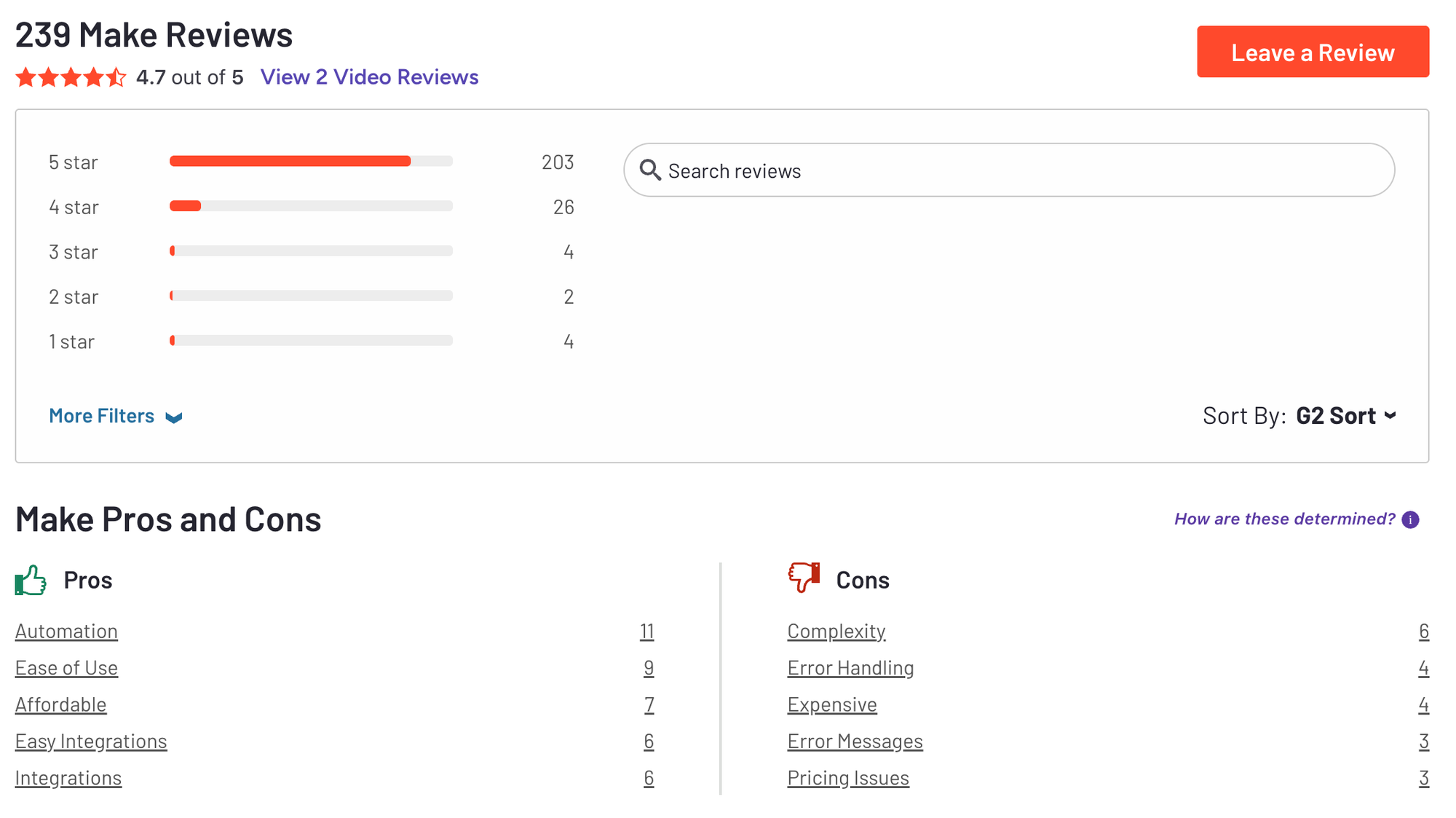
7. Motion
2. Motion
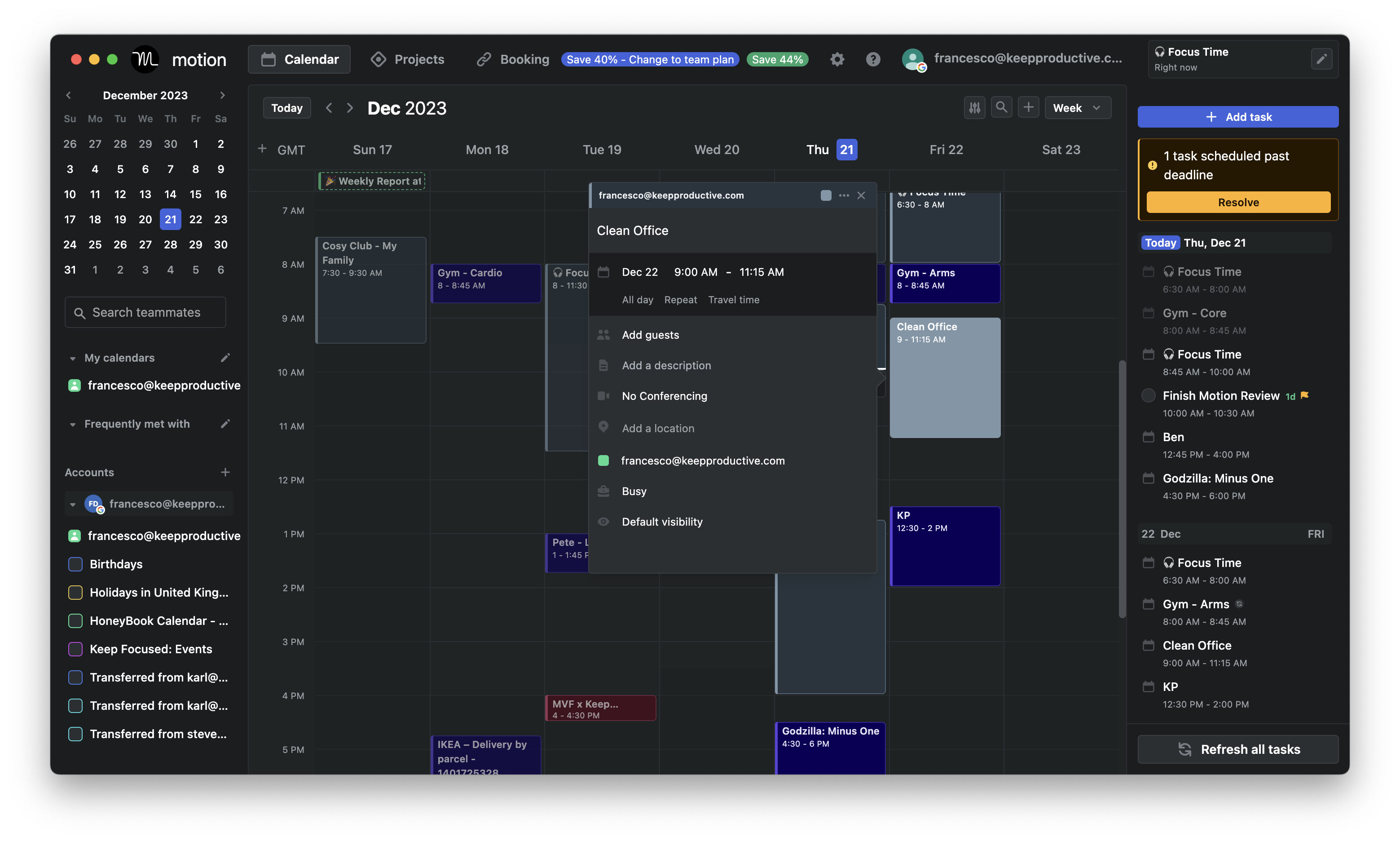
Motion is an AI work platform that now lets you “hire” AI Employees - virtual teammates that handle real tasks like scheduling, outreach, project follow-ups, research, and operations work. Motion’s AI Employees execute workflows behind the scenes
Key features
- Pre-built AI Employees for common roles like Executive Assistant, SDR, Marketing Associate, Customer Support, Recruiter, and Project Manager
- Ability to create custom AI Employees using natural language
- Deep integrations with tools like Google Workspace, Outlook, Slack, Salesforce, HubSpot
What I liked:
- It removes a lot of manual busy-work once it’s properly set up, especially in sales and operations workflows
- The native integration with Motion’s task and scheduling engine gives the AI more useful context
What I disliked:
- Many reviewers note the feature still feels early, more like a powerful beta than a fully finished product
- Setup takes some time; you need to connect the right tools and provide enough business context for the AI to work well
- Pricing sits on the higher end compared to simpler automation tools

- The mobile app feels more limited than the desktop version
- Don't have an AI assistant interface to chat with
Pricing:
- Free trial (7–14 days depending on plan)
- $29/user/month for the AI Workspace plan
- $49/user/month for the AI Employee plan
Suitable for:
- Teams looking to delegate admin, sales outreach, scheduling, and operational tasks to AI rather than doing them manually
How to start:
- Sign up for a Motion account
- Connect your calendars, email, and workspace tools
Motion reviews (source)

🎯 Conclusion: The Future Is Agentic
AI agents aren’t just another layer of productivity software - they represent a shift in how we work. Instead of clicking through endless menus or juggling multiple apps, these tools can reason, plan, and execute on your behalf.
The right tool depends on your context:
- If you’re an overwhelmed professional or ADHD-prone, something like Saner.AI helps you turn chaos into clarity.
- If you’re a team leader needing approvals and structure, Relay.app or Relevance AI bring governance to automation.
- If you’re an experimenter hungry for cutting-edge autonomy, Manus and other beta agents show what’s possible.
- And for those who just need reliable, no-code integrations, platforms like Zapier, Make.com, and n8n remain staples.
No single tool is perfect. Some excel in ease of use, others in flexibility or depth of automation. What unites them is the promise of less busywork and more focus - helping you spend time on meaningful, creative, high-value work.
The best way forward? Start small. Test one or two of these tools in your daily workflow, see what fits, and let the agents do what they do best: take work off your plate.
If you’re curious to experience how an AI agent feels when it’s designed for clarity and calm, give Saner.AI a try - it’s built to help you think less about juggling tasks and more about doing what matters.
Get your AI personal assistant without complicated setup
FAQ: Best AI Agent Tools (2025)
1. What is an AI agent tool?
An AI agent tool is an intelligent assistant that doesn’t just respond to prompts - it acts on your behalf. Unlike traditional chatbots or passive note apps, AI agents can:
- Understand context from your notes, emails, and tasks
- Take proactive steps (like scheduling, organizing, following up)
- Connect with your tools (Slack, Gmail, Calendar, Notion, etc.)
- Help reduce manual work and cognitive overload
Popular AI agent tools in 2025 include Saner.AI, n8n, Relay, Zapier, Lindy, Make, Relevance, Manus, and Genspark - each with different levels of automation and smart task execution.
2. What’s the difference between an AI agent and a regular AI assistant?
Most AI assistants (like ChatGPT) wait for instructions. AI agents go further:
- AI Assistant: Reactive. Answers your questions.
- AI Agent: Proactive. Understands your goals and takes action - like scheduling meetings, following up, or turning notes into tasks.
For example, Saner.AI reads your scattered thoughts and turns them into a daily plan - without you doing the sorting.

3. What can the best AI agent tools do in 2025?
The top AI agents automate and simplify your workflow. Key features include:
- Task from text: Turn rambles, notes, or voice into actionable tasks
- Auto-planning: Suggest or schedule tasks based on your calendar and priorities
- Workflow automation: Trigger actions across your tools (e.g., Slack + Gmail + Notion)
- Smart search: Find anything across docs, notes, and emails
- Meeting prep: Pull up context, decisions, and follow-ups
- Follow-up reminders: Never forget what you said you’d do
4. Which AI agent tools are best for beginners?
If you want to start simple:
- Saner.AI: Great for task management, note-based planning, ADHD-friendly interface
- Zapier: No-code automation for beginners, but limited "reasoning" capability
- Make: Visual automation builder with lots of templates
- Manus: General agent that acts on your workflow via chat
5. Are there free AI agent tools?
Yes, several top-tier tools offer free plans:
- Saner.AI: Free plan with voice-to-task, natural search, calendar sync
- Zapier: Free tier includes 100 tasks/month
- Make: Free plan with limited automation scenarios
6. What’s the best AI agent tool for task management?
Saner.AI leads here. It’s designed to:
- Turn messy notes into clear, actionable tasks
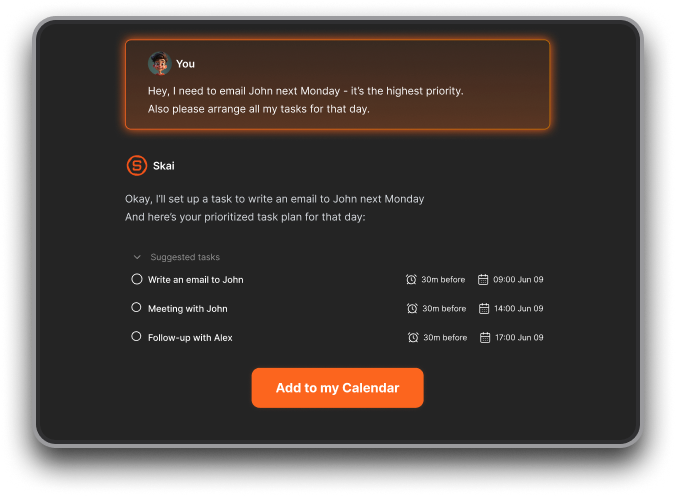
- Auto-plan your day from emails, todos, and calendar
- Keep you focused without switching between apps
If you want more backend automations, n8n and Make are also great picks.
7. How do I choose the best AI agent tool for my needs?
Ask yourself:
- Do I want simple daily task help? → Saner.AI
- Do I need full automation workflows? → n8n, Zapier, Make
- Do I want chat-style automation? → Genspark, Saner.AI, Manus
- Do I need integration with business tools? → Zapier, Make, Saner.AI
8. Which AI agent tools help with daily planning?
- Saner.AI: Reads your notes, todos, and emails to generate a custom daily plan
9. Can AI agent tools automate across apps?
Yes. These are your go-to picks:
- Zapier: Best for business-friendly workflows
- n8n: Open-source, self-hostable, more control
- Make: Great visual interface for complex flows
- Relevance: Designed for product, ops, and CX teams with deep AI-driven logic
10. What’s the most ADHD-friendly AI agent tool?
Saner.AI stands out - it’s designed by ADHDers for ADHDers:
- No manual tagging or rigid folders
- Brain dump your thoughts and Saner turns them into a plan
- Reminds you when things are due - without you having to set it up
11. Which AI agent tool is best for remote teams?
- Relay: Focused on post-meeting accountability and async follow-ups
- Lindy: Assists in shared team workflows and summaries
- Saner.AI: Keeps tasks, notes, and planning in one shared context
- Make + Zapier: Enable backend automations between team tools
12. Best AI agent for entrepreneurs or solo founders?
Entrepreneurs love:
- Saner.AI: One chatbox for notes, tasks, email follow-up, and calendar
- Manus: Experimental agent with flexible chat prompts
13. What’s the easiest AI agent tool to set up?
- Saner.AI: Plug-and-play setup, works from day one
- Relay: Connects to your calendar, works behind the scenes
- Zapier: Templates available but can get complex fast
- Make: Easier than n8n, but steeper learning curve than Saner or Relay
14. What’s the difference between Saner.AI and tools like Zapier or n8n?
- Saner.AI: Built for daily execution - manages your notes, tasks, and thoughts in real-time
- Zapier/n8n: Built for backend workflows - connects apps behind the scenes, no frontend UX
In short:
Saner = your second brain.
Zapier = your backend assistant
15. Can AI agent tools help me actually do the work, not just remind me?
Some do.
Saner.AI go beyond nudging. They:
- Break down complex tasks
- Prioritize based on deadlines
- Provide the next step in the moment
- Let you “talk it out” when overwhelmed
